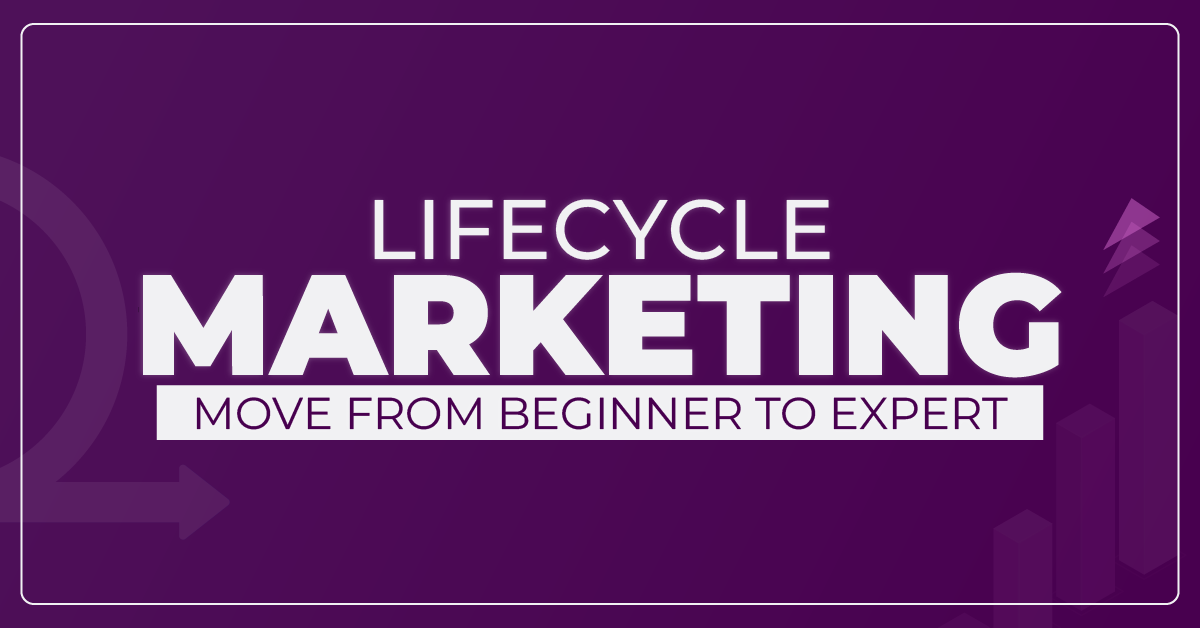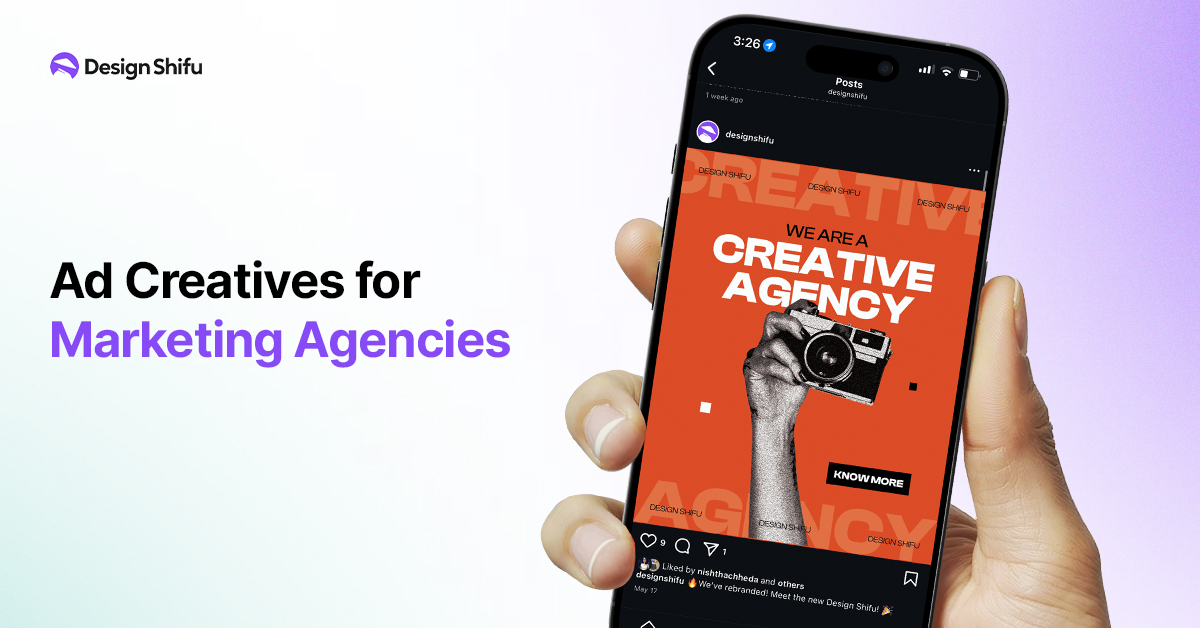With today’s competitive market, the key to long-term success is becoming a master of customer engagement. Lifecycle Marketing – Move From Beginner to Expert is a path each business needs to embark on to engage with customers at each phase of their purchasing process.
Whether you’re new to learning about this potent idea or looking to improve your current strategy, knowing the customer lifecycle and tailoring your marketing accordingly can really enhance the effectiveness of your brand.
From drawing in and captivating leads to nurturing relationships and converting them into loyal customers, the proper lifecycle marketing technique can assist you in creating lasting connections and driving business growth.
Lifecycle Marketing is the journey from a single purchase to forming a lasting bond with a brand. Initially, someone who buys from a business is just taking a test drive, that’s your buyer. They’re in for a quick look, maybe persuaded by an ad or a recommendation.
Once a buyer decides to stick around, making repeat purchases, he or she becomes a customer. A regular customer becomes used to this habit after becoming accustomed to it.
Creative approaches are used to appeal to people’s emotions and desires, while data-driven strategies are used to nurture and sustain these connections. To succeed, one needs to look beyond the first sale and aim for a future where buyers turn into customers, and customers turn into brand ambassadors.
What is Lifecycle Marketing?
Lifecycle marketing revolves around engaging with your audience from their first interaction with your brand to turning them into loyal customers. The transition from a buyer to a customer occurs through repeated positive experiences with your brand. This is where lifecycle marketing kicks in.
It’s a strategic approach focusing on nurturing that initial interest into a deeper relationship. By consistently delivering value, personalizing interactions, and making each touchpoint meaningful, a business can convert one-time buyers into repeat customers.
According to our research into lifecycle marketing, long-term success depends on nurturing your customers into loyal customers who become advocates for your brand, sharing their positive experiences with others. As your customers evolve, so do their expectations for quality and engagement. Let Design Shifu boost your lifecycle marketing strategy by ensuring that every touchpoint with your customers is not just seen but remembered. Watch your brand’s loyalty soar with us today.
Offering unlimited graphic design requests, rapid turnaround times, and personalized service, Design Shifu ensures your brand consistently stands out in a crowded market. Whether you’re launching new campaigns, refreshing your brand image, or simply maintaining engagement, our subscription-based model provides an efficient, cost-effective solution to keep your visual content fresh and compelling.
What are the benefits of a Lifecycle Marketing Strategy?
Lifecycle marketing optimizes the customer journey through personalized engagement, driving benefits across multiple dimensions:
Enhanced Customer Experience
Ensures every customer interaction is personalized, building trust and enhancing satisfaction.
Optimized Engagement Strategies
Crafts messages and offers that resonate with customers at each stage of their journey, improving conversion rates.
Sustainable Business Growth
Focuses on increasing the lifetime value of customers through strategic engagement, boosting overall revenue.
Efficiency in Resource Allocation
Allocates marketing resources to the most effective campaigns and channels, enhancing ROI.
Data-Driven Decision Making
Leverages customer data to inform product development and marketing strategies, ensuring decisions meet customer needs.
Competitive Differentiation
Stands out in the market by offering unique, personalized customer experiences, turning customers into brand advocates.
Lifecycle Marketing vs Growth Marketing

Please find below the differences between Lifecycle Marketing and Growth Marketing:
| Feature | Lifecycle Marketing | Growth Marketing |
| Focus | Nurturing and developing relationships with customers over time. | Rapidly expanding the customer base and company revenue. |
| Strategy | Emphasizes personalized customer engagement and retention. | Focuses on aggressive acquisition tactics and scalability. |
| Tactics | Email campaigns, customer loyalty programs, personalized content. | Paid advertising, viral marketing, SEO, content marketing. |
| Measurement | of Customer lifetime value (CLV), retention rates, and loyalty metrics. | Customer acquisition costs (CAC), growth rate, and market share. |
| Objective | To retain customers and encourage repeat business and referrals. | To quickly grow and scale the business. |
| Target Audience | Existing customers and clients for repeat business. | Broad targeting aimed at acquiring new customers. |
| Duration | A long-term approach focusing on building lasting relationships. | Can be short-term focused, aiming for quick wins and growth. |
| Key Benefit | Builds a strong, loyal customer base and enhances brand reputation. | Rapid expansion and capturing market share. |
| Challenges | Requires a deep understanding of customer needs and behaviors. | This can lead to high customer acquisition costs and burnout. |
| Outcome | Sustained growth through customer loyalty and lifetime value. | Potentially rapid but sometimes unsustainable growth patterns. |
Marketing Lifecycle Stages
Viewing lifecycle marketing as a continuous loop rather than a linear path underscores the importance of nurturing customer relationships at every stage.
Discovery Phase
Here’s where the journey begins. Imagine people stumbling upon your brand for the first time. Maybe it’s through an engaging ad, a friend’s recommendation, or a captivating social media post. This stage is all about making a strong first impression, sparking curiosity, and inviting them to learn more.
Interaction Phase
Now, your audience is intrigued. They’re checking out your content, signing up for newsletters, or engaging with your social media profiles. This phase is crucial for building a relationship, offering them valuable insights, and setting the stage for deeper engagement.
Consideration Phase
At this juncture, potential customers are weighing their options. They’re comparing, scrutinizing, and contemplating if your brand meets their needs. Your job? To provide clear, compelling information that highlights your value proposition, making the decision to choose you a no-brainer.
Conversion Phase
This is the moment of truth: the conversion from prospect to customer. Ensuring a smooth, hassle-free purchasing experience is key here. A straightforward checkout process, clear calls-to-action, and reassuring support options can make all the difference.
Post-Purchase Support Phase
The journey doesn’t end at purchase. A one-time buyer can become a repeat customer, or even better, a brand advocate, with the right post-purchase care. Follow-up emails, support resources, and personalized offers keep the relationship alive and thriving.
Advocacy Phase
When customers are so delighted with their experience that they can’t help but share it with others, you’ve hit the loyalty jackpot. Encouraging reviews, referrals, and social shares at this stage amplifies your brand’s reach and draws new prospects into your lifecycle marketing funnel.
How to Develop a Customer Lifecycle Marketing Strategy?

The goal is to not just attract leads but to cultivate a base of customers who are enthusiastic about advocating for your brand, thereby completing the cycle and starting it anew with their referrals.
Awareness:
Amplify your presence. Utilize SEO, engaging social media content, and targeted advertising to attract the right audience. Instead of casting a wide net, focus on creating content that resonates with your ideal buyer personas.
Engagement
Deliver value. Use educational blog posts, interactive videos, and personalized email campaigns to answer prospects’ questions and showcase your brand’s benefits. Personalization and rapid response via automation can enhance this interaction.
Conversion
Simplify the buying process. Provide clear comparisons, compelling testimonials, and trial offers to ease decision-making. Personalizing the experience can significantly lift conversion rates.
Retention
Exceed expectations post-purchase. Implement user-friendly support channels, offer onboarding guides, and send targeted follow-up communications to nurture a positive relationship and encourage repeat business.
Loyalty
Build brand champions. Reward engagement with exclusive offers, referral incentives, and special events. Recognize and leverage the power of satisfied customers to fuel new customer acquisition.
What is the Lifecycle Marketing Process?
The Lifecycle Marketing Process is a comprehensive approach aimed at nurturing relationships with customers at every stage of their journey with your brand, from initial awareness to post-purchase loyalty and advocacy.
1. Discovery and Awareness
This initial phase is where potential customers first encounter your brand. Strategies include SEO, content marketing, social media campaigns, and targeted advertising designed to introduce your brand and set the stage for further engagement.
2. Consideration and Engagement
Once awareness is established, the focus shifts to engaging potential customers by providing valuable content, information, and interactions. This involves educational blog posts, interactive webinars, social media engagement, and personalized email marketing campaigns that cater to the specific needs and interests of your audience.
3. Decision and Conversion
At this critical juncture, prospects evaluate your offerings against competitors. Clear, concise product information, customer testimonials, comparison guides, and free trials or demos can help tip the scales in your favor. Simplifying the purchase process and offering exceptional customer support are also key to converting prospects into customers.
4. Onboarding and Adoption
Post-purchase, the focus shifts to ensuring customers have a smooth onboarding experience. Welcome emails, user guides, and access to customer support can enhance product adoption and satisfaction. Personalized communication and education about product features and benefits can further solidify the relationship.
5. Retention and Loyalty
Keeping customers satisfied and engaged after the initial purchase is crucial. Regular check-ins, feedback requests, loyalty programs, and exclusive offers help maintain a positive relationship. This stage is about delivering ongoing value to encourage repeat business and foster brand loyalty.
6. Advocacy and Expansion
Satisfied customers can become your brand’s most powerful advocates. Encourage sharing of their positive experiences through reviews, testimonials, and referral programs. Engage with these customers on social media and consider them for case studies or as participants in user-generated content campaigns.
7. Continuous Improvement
Across all stages, it’s vital to gather and analyze customer feedback and performance data to refine and optimize your lifecycle marketing strategies. Continuous improvement helps ensure your marketing efforts remain effective and aligned with customer expectations and market trends.
Lifecycle Marketing Examples of Brand Campaigns
1. Welcome Series for New Subscribers
Kickstart the customer journey with a personalized welcome email series that introduces your brand’s values offers a first-purchase discount, and suggests top products.
Use segmentation to tailor the welcome based on how the subscriber was acquired (e.g., through a product page, blog post, or social media).
2. Behavior-Based Email Campaigns
Engage customers with emails triggered by specific behaviors, such as browsing a product without purchasing or abandoning a cart.
Implement dynamic content that showcases similar products or offers a limited-time discount to encourage a purchase.
3. Loyalty and Rewards Program
Increase customer lifetime value by rewarding repeat purchases and engagement with your brand.
Create a tiered rewards system that offers exclusive benefits, early access to new products, and special discounts to frequent buyers.
4. Re-engagement Campaigns
Rekindle interest among customers who haven’t interacted with your brand for a predetermined period.
Send out “We miss you” emails with personalized product recommendations based on past purchases and browsing history, coupled with a special offer.
5. Customer Feedback Surveys
Enhance products and services by gathering insights directly from your customer base.
Deploy surveys post-purchase or after customer service interactions, incentivizing participation with a future discount code or entry into a giveaway.
6. Referral Programs
Leverage satisfied customers to attract new ones through word-of-mouth.
Offer existing customers a reward for referring friends, such as a discount for both the referrer and the referee, thus expanding your customer base organically.
7. Educational Content Series
Establish your brand as a thought leader and build trust by providing value beyond the product.
Create and distribute informative content related to your product or industry, such as how-to guides, tutorials, and industry insights, tailored to where the customer is in their journey.
“Looking to create informative content like how-to guides and tutorials that resonate with your audience”? You can always rely on Design Shifu for all your graphic design needs. Choose us for unlimited design requests, rapid turnaround times, and personalized service with dedicated professional designers.
With our flat-rate pricing and a 14-day risk-free money-back guarantee, Design Shifu is your go-to solution for high-quality, versatile designs across a wide range of services. Elevate your content series and engage your audience more effectively with Design Shifu’s expertise. Start transforming your ideas into visual masterpieces today!
8. Milestone Celebrations
Foster a deeper emotional connection by celebrating customer milestones.
Acknowledge customer anniversaries, birthdays, or significant milestones (e.g., 100th purchase) with personalized messages and exclusive offers.
9. Product Launch Previews
Build excitement and exclusivity around new product launches.
Offer loyal customers early access or pre-order options for new products, accompanied by detailed product stories or behind-the-scenes looks.
10. Seasonal Campaigns
Capitalize on seasonal demand fluctuations with timely and relevant offers.
Deploy campaigns aligned with holidays, seasons, or events, offering curated product selections or themed discounts to tap into the seasonal mood of your customer base.
How can Lifecycle Marketing Improve Customer Retention?
Segmentation and Analysis
Break down your customer base into segments based on behavior and preferences.
Chart the customer journey for each segment, pinpointing opportunities for engagement.
Customization and Engagement
Use insights from segmentation to create personalized interactions that resonate with each customer group.
Implement targeted engagement strategies across different lifecycle stages to maintain relevance and interest.
Continuous Optimization
Use analytics to track the effectiveness of your strategies across segments and touchpoints.
Adjust and improve your approach based on performance data to ensure ongoing relevance and engagement.
Frequently Asked Questions
B2B Lifecycle Marketing targets business clients through tailored strategies across different stages of the business relationship, focusing on long-term engagement and value creation.
What is B2B Lifecycle Marketing?
B2B Lifecycle Marketing targets business clients through tailored strategies across different stages of the business relationship, focusing on long-term engagement and value creation.
What is Email Lifecycle Marketing?
Email Lifecycle Marketing involves sending personalized email communications based on the recipient’s stage in the customer journey, aiming to nurture and convert leads at every step.
How to implement a lifecycle marketing plan?
Start by mapping out the customer journey, then create targeted strategies for each stage, and continuously measure and adjust based on feedback and performance data.
Is lifecycle marketing the same as CRM?
No, lifecycle marketing focuses on the strategic engagement of customers at various stages, while CRM (Customer Relationship Management) is a tool used to manage interactions with customers.
How does lifecycle marketing differ from traditional strategies?
Lifecycle marketing emphasizes personalized engagement tailored to each stage of the customer journey, whereas traditional strategies often take a one-size-fits-all approach to customer interaction.
What are some common mistakes to avoid when implementing a lifecycle marketing strategy?
Avoiding segmentation, neglecting the post-purchase experience, and failing to adapt strategies based on customer feedback and data are common pitfalls in lifecycle marketing.





